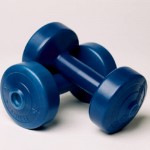 How to always have time for breakfast:
How to always have time for breakfast:
I have to get to work. I’m just not hungry in the morning. I have to get the kids ready for school. Does this sound familiar?
Contrary to popular belief, skipping breakfast does not promote weight loss, only a slower metabolism, larger portions and poor choices later. Yet many of us skip the most important meal of the day.
Eating breakfast gets our metabolism going and fuels our brain and body for the day to come. A healthy breakfast should include lean protein or low-fat dairy, fiber and vegetables whenever possible.
Eating breakfast doesn’t have to be a time consuming ordeal. Planning breakfast in advance is also a great way to prevent falling victim to the morning rush.
Here are some of my favorite quick, healthy breakfast options:
0-2% Greek, light or low-fat yogurt and fruit
Hard boiled egg or egg salad with light mayo in a whole wheat pita pocket – Tip: hard boil a dozen eggs and store them in the fridge for an easy grab and go meal
Whole wheat English muffin with a tablespoon of peanut or almond butter
An omelet – stick to 1 yolk and load it up with your favorite fresh or frozen veggies
Whole wheat bread and a slice of low-fat or part skim cheese – add tomato, roasted pepper or avocado for an extra nutrient and flavor boost
Oatmeal – prepare it with milk for added protein or add chia seeds, which contain fiber, protein and omega-3
Lori Rosenthal, MS, RD, CDN
Bariatric Dietitian
Twitter: @LoRoRD
 Subscribe
Subscribe







